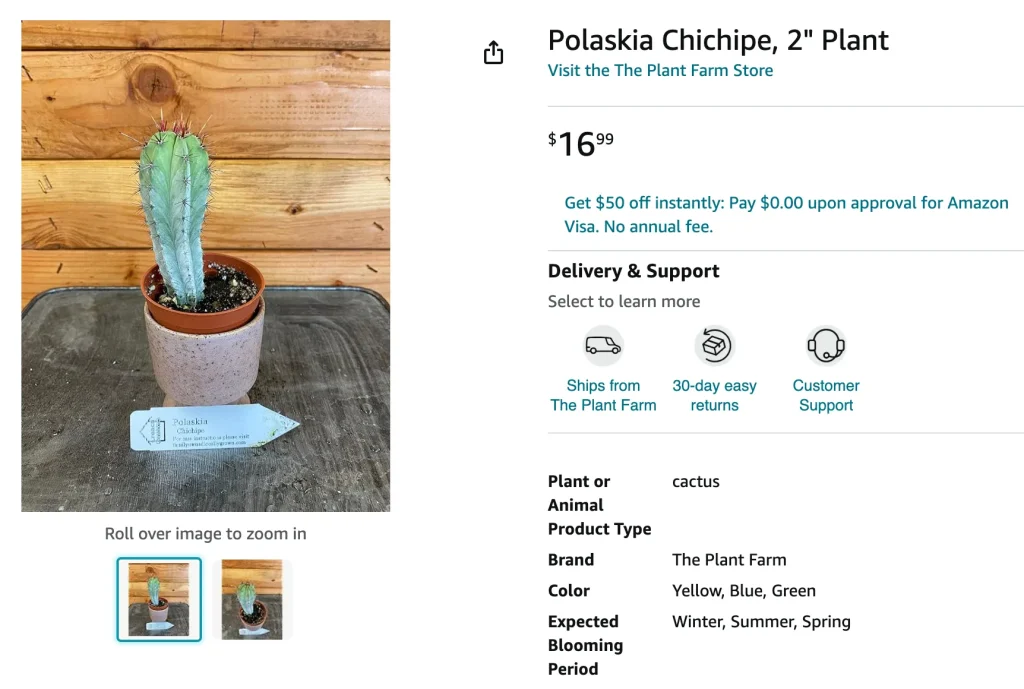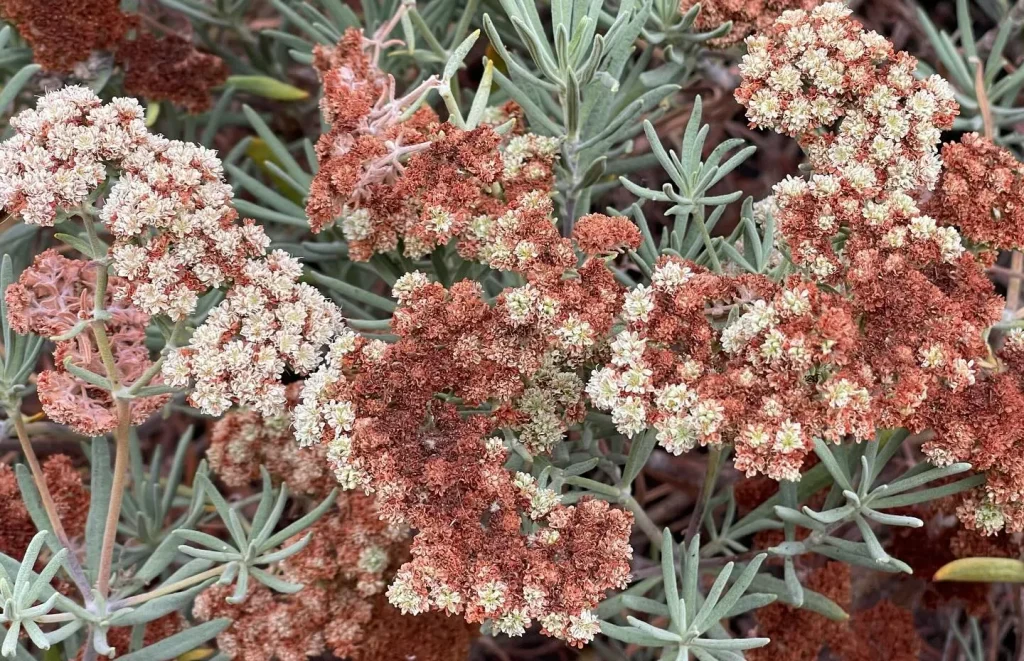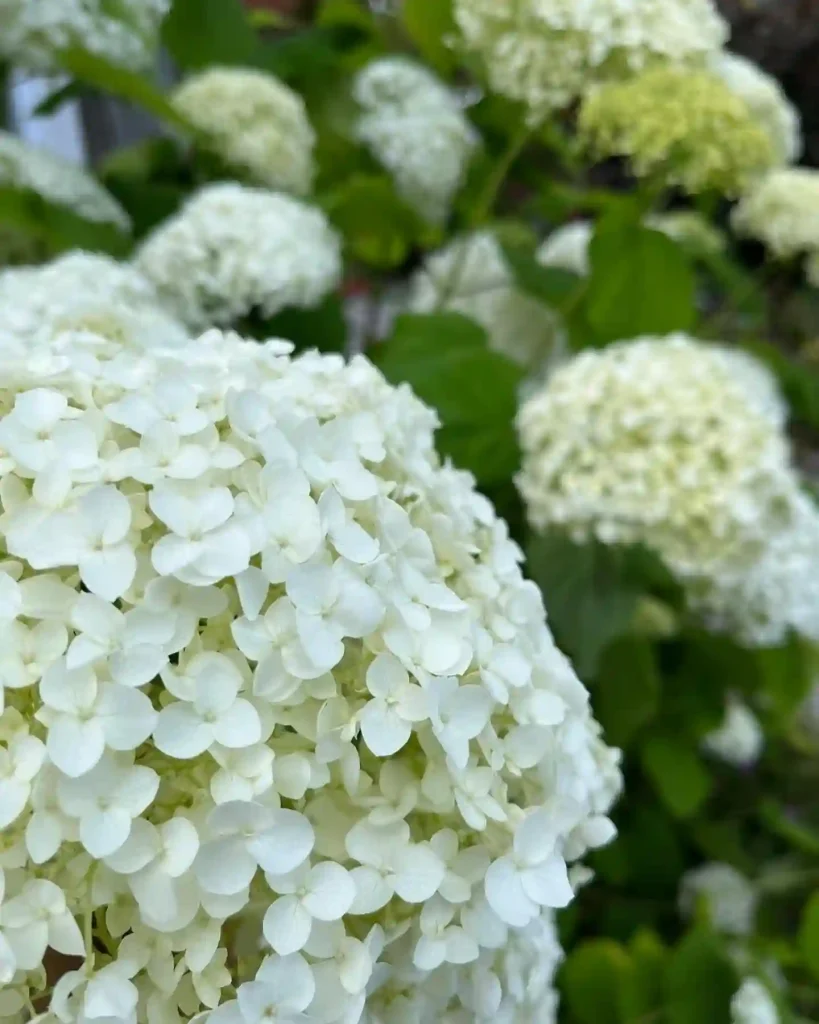
What is Polaskia Chichipe?
Polaskia Chichipe is a fascinating cactus native to Mexico. It’s a columnar species that can grow up to 12 feet tall in its natural environment, giving it a commanding presence. The plant features multiple branches with a bluish-green hue, producing small yellowish flowers that later turn into edible fruits. It’s a striking cactus in the Cactaceae family, known for its distinctive look and adaptability, which makes it an attractive choice for both cactus enthusiasts and landscape designers.
Plant Family: 161 Genera in Cactaceae
How to Care for Polaskia Chichipe?
Caring for Polaskia Chichipe is relatively straightforward, especially for those familiar with the needs of desert plants. This cactus thrives in full sun and requires minimal water, making it perfect for xeriscaping. Here are some key care tips:
- Light: Full sun is essential. Polaskia Chichipe loves bright, direct sunlight, so place it in the sunniest spot possible. If you’re growing it indoors, a south-facing window is ideal.
- Water: Like most cacti, Polaskia Chichipe requires infrequent watering. Water deeply but allow the soil to dry out completely between waterings. Overwatering can lead to root rot, which is one of the most common issues with this plant.
- Soil: A well-draining cactus or succulent mix is ideal for Polaskia Chichipe. You can improve drainage by adding sand or perlite to your soil mixture.
- Temperature: This cactus is frost-sensitive and prefers temperatures above 50°F (10°C). It can tolerate short periods of cooler temperatures, but prolonged exposure to frost will damage the plant.
- Fertilizer: Feed your Polaskia Chichipe once during the growing season (spring and summer) with a diluted cactus fertilizer.
How to Propagate Polaskia Chichipe?
One of the most common questions I get is how to propagate Polaskia Chichipe. Luckily, propagation is quite easy through cuttings, although seeds can also be used. Here’s the step-by-step process I usually follow for successful propagation:
- Choose a healthy cutting: Select a healthy stem and use a clean, sharp knife to cut a section that’s at least 4 inches long. Make sure the cutting is free from any signs of disease or damage.
- Let it dry: Place the cutting in a shaded, dry area for a few days to allow the cut end to callous over. This step is crucial to prevent rot when you plant the cutting.
- Plant the cutting: Once the cutting has dried and calloused, plant it in well-draining soil. Water lightly, then allow the soil to dry completely before watering again.
- Place in bright light: Keep the cutting in a bright location, but avoid direct sunlight until it establishes roots.
You’ll know the cutting has rooted when you see new growth, usually within a few weeks to a couple of months.
Can You Grow Polaskia Chichipe Indoors?
Yes, Polaskia Chichipe can be grown indoors, but it requires plenty of bright, direct sunlight to thrive. A south-facing window is the best spot for this cactus. Make sure it gets at least six hours of sunlight daily, or you might notice slower growth and a leggy appearance. You’ll also want to ensure good air circulation and use a well-draining soil mix to prevent moisture buildup.
Is Polaskia Chichipe Toxic?
Polaskia Chichipe is not toxic to humans or pets. Its fruits are actually edible, and in its native regions, they’re sometimes consumed. However, always be cautious when handling the cactus, as its spines can cause injury.
What Can You Plant with Polaskia Chichipe?
Polaskia Chichipe pairs beautifully with other drought-tolerant plants, particularly succulents and other cacti. Here are a few suggestions for companion plants:
- Agave: Their rosette shape contrasts nicely with the columnar structure of Polaskia Chichipe.
- Echeveria: These low-growing succulents provide an attractive ground cover that complements the verticality of the cactus.
- Aloe: Another excellent companion, aloe plants share similar watering and soil needs.
Common Problems with Polaskia Chichipe
While Polaskia Chichipe is a relatively low-maintenance cactus, a few issues can arise:
- Root rot: Overwatering is the most common issue with this cactus. Ensure the soil dries out completely between waterings, and never let the plant sit in standing water.
- Pests: Although generally pest-free, Polaskia Chichipe can occasionally attract mealybugs and scale insects. Inspect the plant regularly and use insecticidal soap if necessary.
- Sunburn: Sudden exposure to intense sunlight, especially after being kept indoors or in a shaded area, can cause sunburn. Gradually acclimate the plant to full sun to avoid this.
Benefits of Polaskia Chichipe
Beyond its aesthetic appeal, Polaskia Chichipe offers several benefits:
- Drought tolerance: It’s perfect for xeriscaping and requires very little water once established.
- Low maintenance: Polaskia Chichipe is easy to care for and requires minimal attention.
- Edible fruits: In its native habitat, the fruits of Polaskia Chichipe are harvested and consumed.
Can You Compare Polaskia Chichipe with Other Similar Cacti?
Polaskia Chichipe is sometimes confused with other columnar cacti like Stenocereus or Pachycereus species. While they share similar growing habits, Polaskia Chichipe stands out due to its distinct bluish-green stems and unique branching pattern. Its fruits are also a distinguishing feature, as many other columnar cacti don’t produce edible fruit. Compared to Pachycereus Pringlei, for instance, Polaskia Chichipe remains smaller and more manageable in a garden setting.
Final Thoughts on Polaskia Chichipe
Polaskia Chichipe is a stunning, low-maintenance cactus that’s perfect for anyone looking to add some vertical interest to their garden or indoor space. It’s relatively easy to propagate and care for, making it a great option for both beginners and experienced gardeners. Whether you’re growing it for its architectural beauty or its edible fruits, Polaskia Chichipe is a versatile addition to any plant collection.
If i die, water my plants!



